-
 Bitcoin
Bitcoin $81,973.5211
-3.14% -
 Ethereum
Ethereum $1,771.8221
-4.70% -
 Tether USDt
Tether USDt $0.9996
-0.04% -
 XRP
XRP $2.0020
-4.93% -
 BNB
BNB $586.3762
-2.30% -
 USDC
USDC $0.9997
-0.03% -
 Solana
Solana $113.7739
-9.53% -
 Dogecoin
Dogecoin $0.1574
-7.43% -
 Cardano
Cardano $0.6244
-7.96% -
 TRON
TRON $0.2315
-2.36% -
 Toncoin
Toncoin $3.6020
-10.34% -
 UNUS SED LEO
UNUS SED LEO $9.3401
-1.03% -
 Chainlink
Chainlink $12.4356
-7.28% -
 Stellar
Stellar $0.2536
-4.73% -
 Avalanche
Avalanche $17.8372
-6.13% -
 Sui
Sui $2.2393
-7.83% -
 Shiba Inu
Shiba Inu $0.0...01195
-3.16% -
 Hedera
Hedera $0.1559
-5.48% -
 Litecoin
Litecoin $80.9170
-1.94% -
 Polkadot
Polkadot $3.8852
-4.23% -
 MANTRA
MANTRA $6.2821
-0.06% -
 Bitcoin Cash
Bitcoin Cash $298.6048
-1.78% -
 Bitget Token
Bitget Token $4.4929
-1.56% -
 Dai
Dai $0.9999
0.01% -
 Ethena USDe
Ethena USDe $0.9995
-0.03% -
 Monero
Monero $211.5827
-1.86% -
 Pi
Pi $0.5588
-16.11% -
 Hyperliquid
Hyperliquid $11.3193
-14.69% -
 Uniswap
Uniswap $5.7424
-4.67% -
 Aptos
Aptos $5.0458
-3.81%
How to use on-chain data to judge the buying time
On-chain data offers valuable insights for crypto investors, but it should be combined with technical and fundamental analysis for a comprehensive investment strategy.
Apr 01, 2025 at 04:43 pm
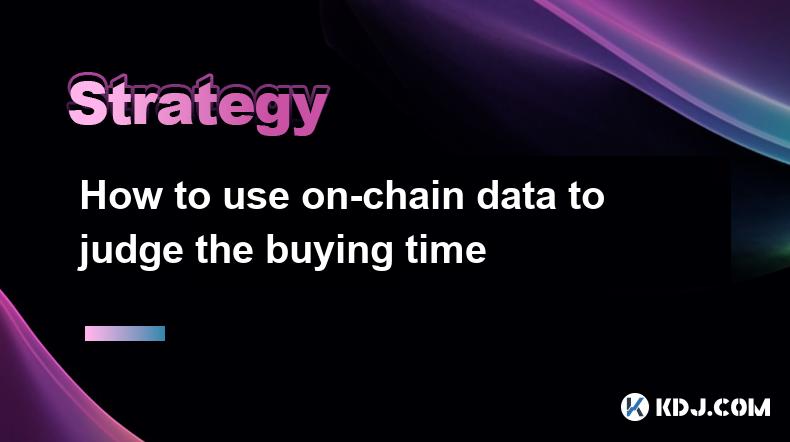
On-chain data provides invaluable insights into cryptocurrency market dynamics, allowing savvy investors to potentially identify opportune buying moments. However, it's crucial to remember that on-chain analysis is just one piece of the puzzle; it shouldn't be used in isolation. Combining on-chain indicators with other forms of technical and fundamental analysis is essential for a well-rounded investment strategy. This article explores how to leverage on-chain data to inform your buying decisions.
Understanding Key On-Chain Metrics
Several on-chain metrics offer clues about market sentiment and potential price movements. Understanding these metrics is crucial for effective analysis. Let's delve into some of the most important ones.
Network Activity: High transaction volume and active addresses often suggest increased market interest and potential price appreciation. Conversely, low activity might indicate waning interest. However, it's crucial to consider the context. A sudden spike could be a short-term pump, not a long-term trend.
Exchange Inflows/Outflows: A significant increase in exchange inflows suggests selling pressure as investors deposit their holdings onto exchanges. Conversely, high outflows might indicate accumulation by long-term holders. This metric helps gauge overall market sentiment.
Realized Cap and Market Cap: The realized capitalization represents the total value of all coins at their last traded price. Comparing this to the market cap helps determine whether the market is overvalued or undervalued. A large disparity could signal potential for price correction.
Miner Behavior: Analyzing miner activity, such as hash rate and mining profitability, provides insights into the overall health and security of the network. A sudden drop in hash rate could signal potential vulnerabilities.
Interpreting On-Chain Data for Buying Opportunities
Interpreting on-chain data requires careful consideration and a holistic approach. Relying on a single metric can be misleading. Instead, look for converging signals across multiple metrics.
Identifying Accumulation: Look for periods of high outflows from exchanges combined with increasing network activity and a low realized capitalization compared to market capitalization. This often suggests accumulation by large holders, potentially foreshadowing a price increase.
Spotting Capitulation: Observe periods of extremely low network activity, high exchange inflows, and a significant drop in price. This could indicate capitulation, a point where selling pressure is exhausted, potentially marking a buying opportunity. However, be cautious, as a further decline is always possible.
Analyzing Whale Activity: Monitoring the activity of large holders ("whales") can reveal significant shifts in market sentiment. Large buys or sells can have a substantial impact on price, providing valuable insights.
Step-by-Step Guide to On-Chain Analysis for Buying Decisions
Here's a step-by-step guide to using on-chain data to inform your buying decisions:
Choose Your Data Source: Select a reputable platform offering reliable on-chain data, such as Glassnode, CoinMetrics, or similar providers. Ensure the data is accurate and up-to-date.
Select Relevant Metrics: Based on your investment strategy and the specific cryptocurrency, choose the most relevant on-chain metrics to track.
Analyze Historical Data: Review historical on-chain data to identify patterns and correlations between metrics and price movements. This helps establish baselines for comparison.
Monitor Current Data: Continuously monitor real-time on-chain data to detect significant changes or deviations from historical patterns.
Combine with Other Analyses: Don't rely solely on on-chain data. Integrate your findings with technical analysis (charts, indicators) and fundamental analysis (project fundamentals, team, etc.) for a more comprehensive perspective.
Manage Risk: On-chain analysis doesn't guarantee profits. Always manage your risk appropriately by diversifying your portfolio and only investing what you can afford to lose.
Advanced On-Chain Techniques
For more sophisticated analysis, consider these advanced techniques:
Network Value to Metcalfe's Law (NVT): This ratio compares network value to the square of the number of active addresses. High NVT suggests potential overvaluation.
Liveliness: This metric measures the percentage of coins that have moved in a given period. High liveliness can indicate increased trading activity.
Transaction Fees: Analyzing transaction fees can provide insights into network congestion and demand.
Common Questions and Answers
Q: What are the limitations of using on-chain data for buying decisions?
A: On-chain data is not a crystal ball. It provides valuable insights, but it's not a foolproof predictor of future price movements. External factors, market sentiment, and regulatory changes can all influence price independently of on-chain indicators. Over-reliance on on-chain data alone can lead to poor investment decisions.
Q: Are there any free resources for accessing on-chain data?
A: Yes, several platforms offer free access to some on-chain data, although often with limitations on the data's scope or frequency of updates. Glassnode, for instance, offers some free data, while CoinMetrics and similar platforms provide more comprehensive data through paid subscriptions.
Q: How often should I analyze on-chain data?
A: The frequency of your analysis depends on your investment strategy and risk tolerance. Some investors monitor data daily, while others might only check weekly or monthly. The key is consistency and a disciplined approach. Regular monitoring allows you to react to significant changes in market dynamics.
Q: Can on-chain data be manipulated?
A: While blockchain data is generally considered transparent and immutable, sophisticated actors could potentially attempt to manipulate certain on-chain metrics. It's important to be aware of this possibility and to cross-reference data from multiple sources to ensure accuracy. Furthermore, understanding the limitations of individual metrics is crucial to avoid misinterpretations.
Q: What are some good resources for learning more about on-chain analysis?
A: Numerous online resources, including educational websites, articles, and courses, provide comprehensive guidance on on-chain analysis. Many cryptocurrency exchanges and analytical platforms also offer educational materials to help users understand and interpret on-chain data effectively. Exploring these resources will significantly improve your analytical skills.
Disclaimer:info@kdj.com
The information provided is not trading advice. kdj.com does not assume any responsibility for any investments made based on the information provided in this article. Cryptocurrencies are highly volatile and it is highly recommended that you invest with caution after thorough research!
If you believe that the content used on this website infringes your copyright, please contact us immediately (info@kdj.com) and we will delete it promptly.
- Ignore the Bitcoin Crash, These 3 Presale Tokens Are the Best Crypto to Buy the Dip
- 2025-04-03 20:45:12
- Outperforming Cardano (ADA): Dogecoin (DOGE), Stellar (XLM), TRON (TRX), and Rexas Finance (RXS)
- 2025-04-03 20:45:12
- Former Binance CEO Changpeng Zhao (CZ) Rejected an Acclaimed Innovator's Proposal to Collaborate on Tokenizing Assets
- 2025-04-03 20:40:12
- Influenced by the United States' Changing Crypto Regulatory Landscape, Brazil is Considering Issuing Its Own Stablecoin
- 2025-04-03 20:40:12
- PayPal Crypto Has Added Solana and Chainlink for U.S. Customers
- 2025-04-03 20:35:12
- Bitcoin (BTC) is the “safe haven” of future wealth, and cloud mining is the core entrance
- 2025-04-03 20:35:12
Related knowledge

How to use the three crows candlestick combination to determine the market top?
Apr 03,2025 at 03:18pm
Three Black Crows are a classic K-line combination form that is often used to judge the top of the market in technical analysis. This pattern consists of three consecutive negative lines, the opening price of each negative line is within the entity of the previous K-line, and the closing price gradually decreases. This pattern usually appears at the end...
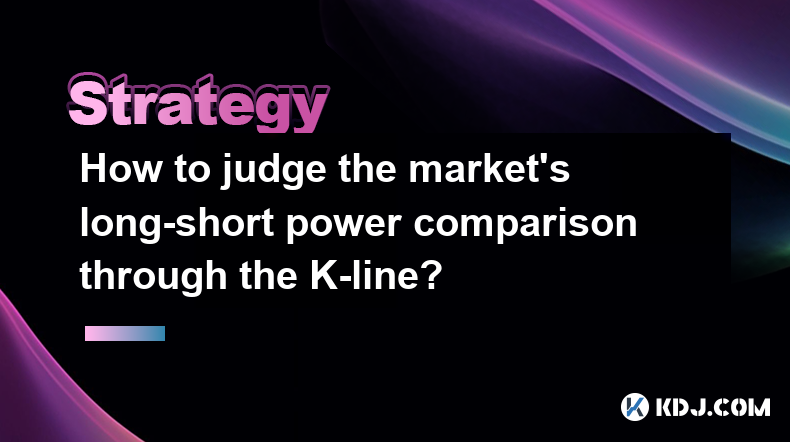
How to judge the market's long-short power comparison through the K-line?
Apr 03,2025 at 02:39pm
Judging the market's long-short power comparison through the K-line is an important skill in technical analysis. The K-line chart can not only show price changes, but also reflect the emotions and power comparison of market participants. This article will introduce in detail how to judge the market's long-short power comparison through K-lines. ...
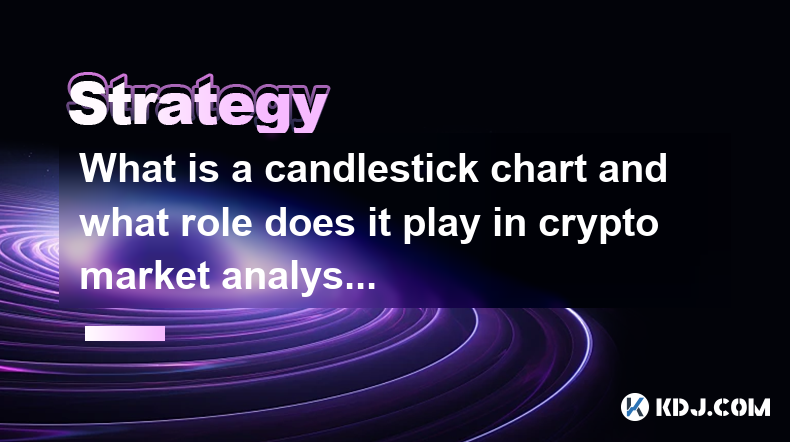
What is a candlestick chart and what role does it play in crypto market analysis?
Apr 03,2025 at 02:26pm
K-line chart, also known as candle chart, is a form of chart used to display changes in the price of financial products. In the cryptocurrency market, K-line charts are widely used to analyze the price trends of digital assets such as Bitcoin and Ethereum. This article will introduce in detail the basic structure, types of K-line charts and their specif...
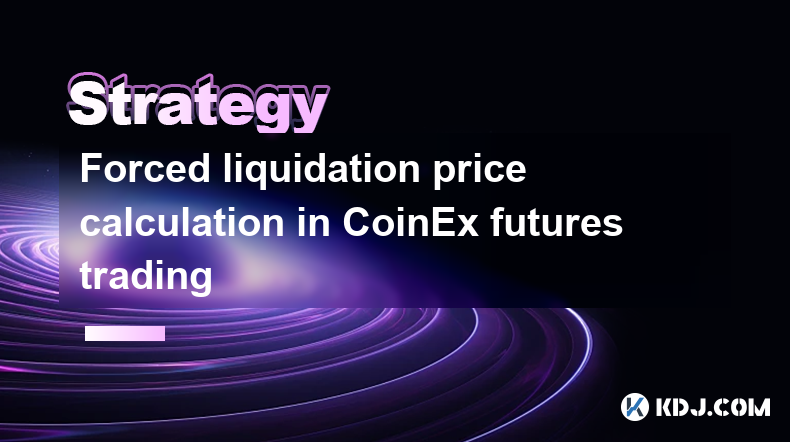
Forced liquidation price calculation in CoinEx futures trading
Apr 03,2025 at 05:35am
In CoinEx futures trading, understanding the forced liquidation price is crucial for managing risk and maintaining your positions. The forced liquidation price is the point at which your position is automatically closed to prevent further losses. This mechanism is designed to protect both the trader and the platform from negative account balances. The c...
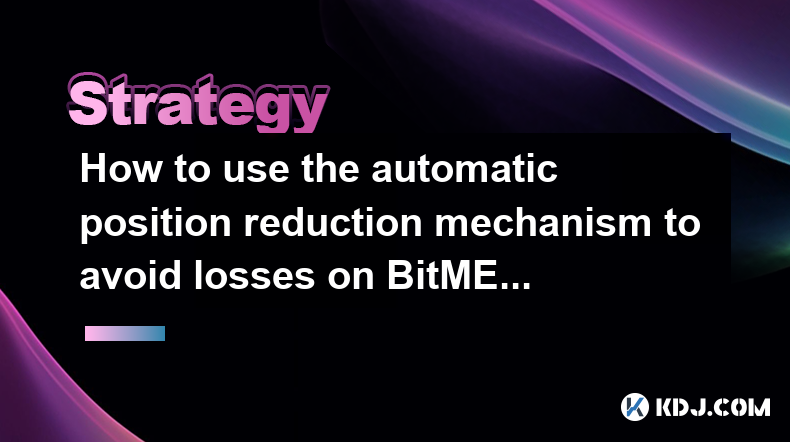
How to use the automatic position reduction mechanism to avoid losses on BitMEX
Apr 03,2025 at 02:56am
Using the automatic position reduction mechanism on BitMEX can be a strategic approach to managing risk and avoiding potential losses in the volatile cryptocurrency market. This feature, also known as Auto Deleveraging (ADL), is designed to help traders by automatically reducing their positions in certain conditions. To effectively use this mechanism, i...
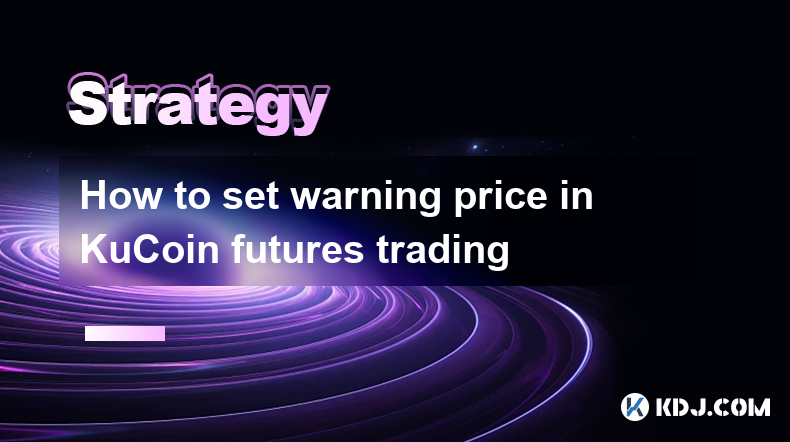
How to set warning price in KuCoin futures trading
Apr 03,2025 at 08:14am
Setting a warning price in KuCoin futures trading is an essential feature for managing risk and staying informed about market movements. This tool allows traders to receive notifications when the price of a futures contract reaches a specific level, helping them make timely decisions. To set a warning price, you need to navigate to the futures trading i...

How to use the three crows candlestick combination to determine the market top?
Apr 03,2025 at 03:18pm
Three Black Crows are a classic K-line combination form that is often used to judge the top of the market in technical analysis. This pattern consists of three consecutive negative lines, the opening price of each negative line is within the entity of the previous K-line, and the closing price gradually decreases. This pattern usually appears at the end...

How to judge the market's long-short power comparison through the K-line?
Apr 03,2025 at 02:39pm
Judging the market's long-short power comparison through the K-line is an important skill in technical analysis. The K-line chart can not only show price changes, but also reflect the emotions and power comparison of market participants. This article will introduce in detail how to judge the market's long-short power comparison through K-lines. ...

What is a candlestick chart and what role does it play in crypto market analysis?
Apr 03,2025 at 02:26pm
K-line chart, also known as candle chart, is a form of chart used to display changes in the price of financial products. In the cryptocurrency market, K-line charts are widely used to analyze the price trends of digital assets such as Bitcoin and Ethereum. This article will introduce in detail the basic structure, types of K-line charts and their specif...

Forced liquidation price calculation in CoinEx futures trading
Apr 03,2025 at 05:35am
In CoinEx futures trading, understanding the forced liquidation price is crucial for managing risk and maintaining your positions. The forced liquidation price is the point at which your position is automatically closed to prevent further losses. This mechanism is designed to protect both the trader and the platform from negative account balances. The c...

How to use the automatic position reduction mechanism to avoid losses on BitMEX
Apr 03,2025 at 02:56am
Using the automatic position reduction mechanism on BitMEX can be a strategic approach to managing risk and avoiding potential losses in the volatile cryptocurrency market. This feature, also known as Auto Deleveraging (ADL), is designed to help traders by automatically reducing their positions in certain conditions. To effectively use this mechanism, i...

How to set warning price in KuCoin futures trading
Apr 03,2025 at 08:14am
Setting a warning price in KuCoin futures trading is an essential feature for managing risk and staying informed about market movements. This tool allows traders to receive notifications when the price of a futures contract reaches a specific level, helping them make timely decisions. To set a warning price, you need to navigate to the futures trading i...
See all articles























































































